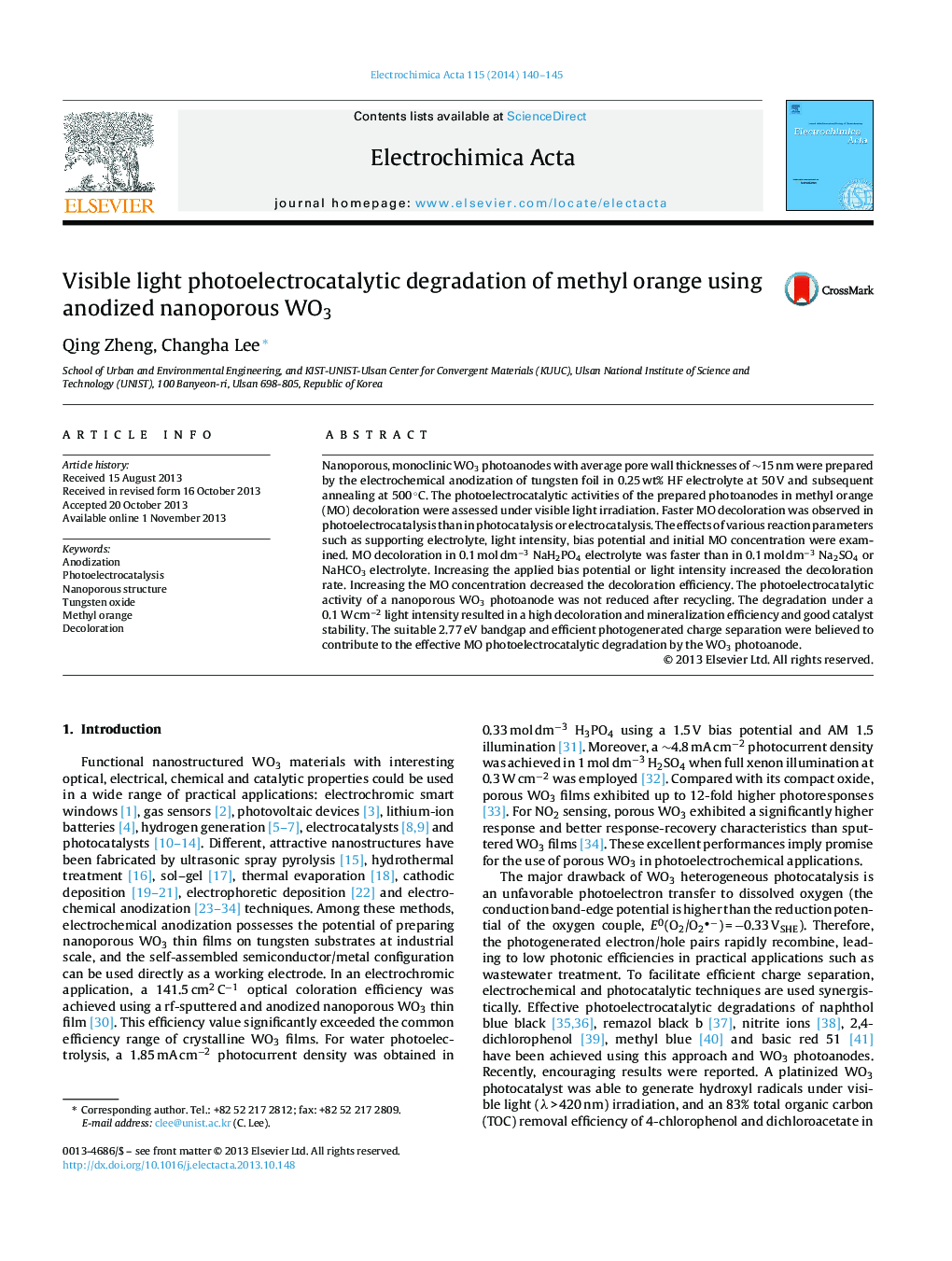| Article ID | Journal | Published Year | Pages | File Type |
|---|---|---|---|---|
| 6614133 | Electrochimica Acta | 2014 | 6 Pages |
Abstract
Nanoporous, monoclinic WO3 photoanodes with average pore wall thicknesses of â¼15 nm were prepared by the electrochemical anodization of tungsten foil in 0.25 wt% HF electrolyte at 50 V and subsequent annealing at 500 °C. The photoelectrocatalytic activities of the prepared photoanodes in methyl orange (MO) decoloration were assessed under visible light irradiation. Faster MO decoloration was observed in photoelectrocatalysis than in photocatalysis or electrocatalysis. The effects of various reaction parameters such as supporting electrolyte, light intensity, bias potential and initial MO concentration were examined. MO decoloration in 0.1 mol dmâ3 NaH2PO4 electrolyte was faster than in 0.1 mol dmâ3 Na2SO4 or NaHCO3 electrolyte. Increasing the applied bias potential or light intensity increased the decoloration rate. Increasing the MO concentration decreased the decoloration efficiency. The photoelectrocatalytic activity of a nanoporous WO3 photoanode was not reduced after recycling. The degradation under a 0.1 W cmâ2 light intensity resulted in a high decoloration and mineralization efficiency and good catalyst stability. The suitable 2.77 eV bandgap and efficient photogenerated charge separation were believed to contribute to the effective MO photoelectrocatalytic degradation by the WO3 photoanode.
Keywords
Related Topics
Physical Sciences and Engineering
Chemical Engineering
Chemical Engineering (General)
Authors
Qing Zheng, Changha Lee,
